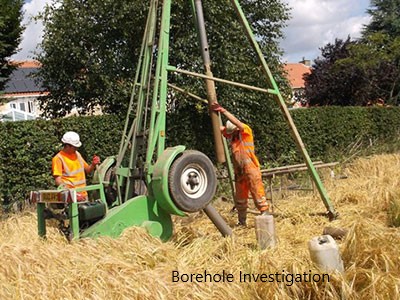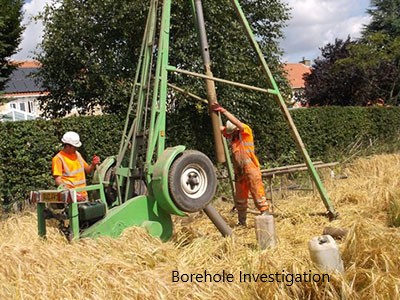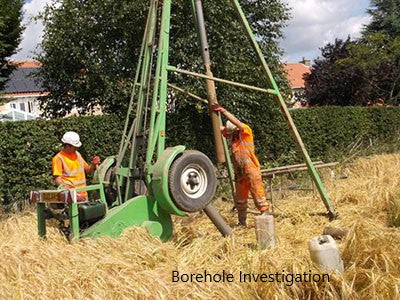Borehole surveys and borehole layout planning are carried out to obtain recommendations from the geotechnical engineer for foundations.
Well investigations are carried out to get an idea of the underlying soil layers. The recommendation for foundations is made based on the condition of the soil layers.
Generally, standard penetration testing (SPT) is performed to determine the stiffness of the floor. SPT values are determined at any depth from 1 m to the maximum possible depth. If SPT values are greater than 50, it is called hammer impact. In other words, SPT values can be compared to hammer impact.


Drilling depth is determined based on rock conditions. If the rock is weak, deeper drilling is needed to predict the condition of the rock.
The article was written in Geotechnical Investigation For more information on this topic, in addition to the content of this article, you can also refer to the following links.
To perform a well survey, we need to determine the number of wells to be drilled.
Well placement depends on several factors. Some of them are as follows.
- Building land area
- The scope of the project
- Structural load and load sharing arrangements
- Soil texture
- Importance of structure
Based on the above factors, the well plan is decided. When selecting the number of holes, the recommendations of geotechnical engineers are also taken into account.
As a rule, pile foundations are built for tall buildings. Article Single Pile Design For more information on pile structures, see. The information contained in the geotechnical report can be used for construction by applying appropriate safety coefficients.
In general, the maximum allowable load capacity and surface friction of the soil and rock layers are available to the designer in order to proceed with the design.
However, for low-rise buildings with sufficient load-bearing capacity, the typical type of foundation is a shallow foundation. Individual foundations, combined foundations, slab foundations, etc. can be used as foundations.
Various articles are written about Strip Foundation Design , Individual Foundation Design and Combined Foundation Design could be used for design methods for shallow foundations.
If the ground conditions are poor, regardless of whether it is a low-rise or high-rise building, a pile foundation may be an option.
A detailed article with more information has been published at yourarticlelibrary.com.

